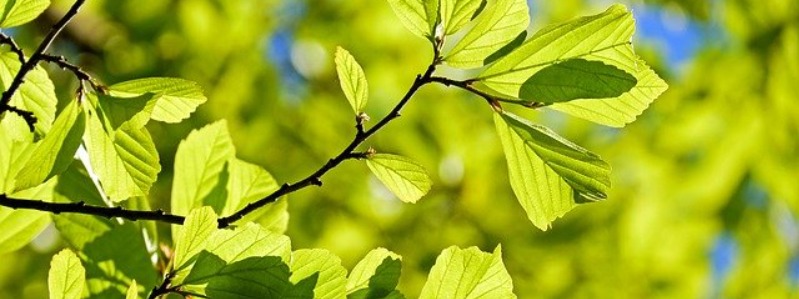Trees that Grow in Central Texas
Contents
Perhaps the most important facts you must know to be successful with trees in Central Texas are what trees do the best here, and when and how to plant them. Whenever possible, plant trees in the very late fall or winter. This will help your tree develop roots and get established before it has to face a Texas summer. Never plant a tree when it is hot and dry. You can plant in the Spring, but this is a poor third choice.
Best Trees for Central Texas
Althea
Also known as the Rose of Sharon, this wonderful flowering small tree is a joy to possess. It can take full sun and does not need a lot of water. This is one of my very favorite trees.
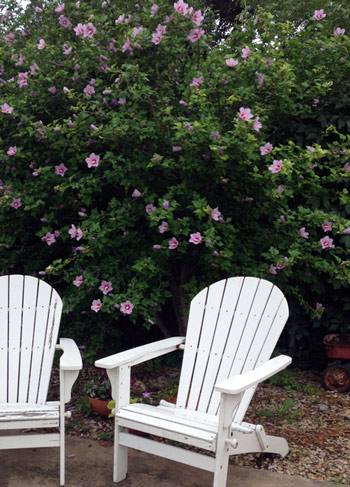
Bird of Paradise
this is a small tree with large yellow flowers in the spring and summer. It is drought tolerant and grows well in any soil in the sun.
Carolina Buckthorn
Carolina Buckthorn is a tree for sun or shade, it grows to about 15 to 30 feet tall. It needs good drainage but it is drought-tolerant. It has glossy green leaves and red berries.
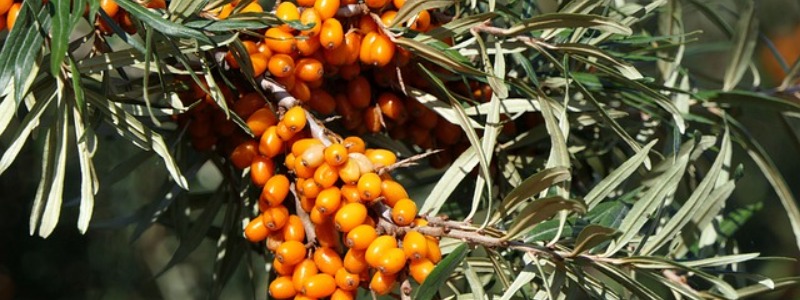
Desert Willow
Desert Willow is a beautiful small tree with lovely, pink trumpet-shaped flowers. It blooms all summer and reaches only a high of about 25 feet. It is somewhat deer resistant, and the flowers attract hummingbirds. It needs full sun but does not need water unless the heat and drought are extremely severe. This is an Earth-Kind® tree.
Elms
The varieties of elms that we recommend for Central Texas are the Cedar elm and the Lacebark elm. Both are deciduous and can grow tall. They are more resistant to disease and healthier than generic elms.
Texas native Cedar Elms are a popular landscaping choice, reaching 40′ to 70′ tall with a rounded or vase shape spanning 40′ to 70′ wide. With a high heat tolerance and resistance to pests, this tree is resistant to many Central Texas concerns. Cedar Elm also yields winged samara in autumn and flowers in the summer and fall.
Eve’s Necklace
Eve’s Necklace is an ornamental tree reaching from 15 to 25 feet tall. Its pink flowers resemble a wisteria. It is deciduous and drought tolerant, producing an interesting seedpod that looks like a little section of a necklace. Be cautioned that the seeds are poisonous.
Holly
Hollies come in little decorative trees as well as shrubs of various sizes depending on the variety. All of them are excellent. You cannot go wrong by planting a holly in your landscape. If you have any doubt as to whether you have bought a holly, look for the word ilex in its name. The Yaupon holly is the one that reaches the size of a small tree. The female trees have red berries so you may wish to purchase this plant in the fall when it has berries on it, to make sure you’re getting a female.
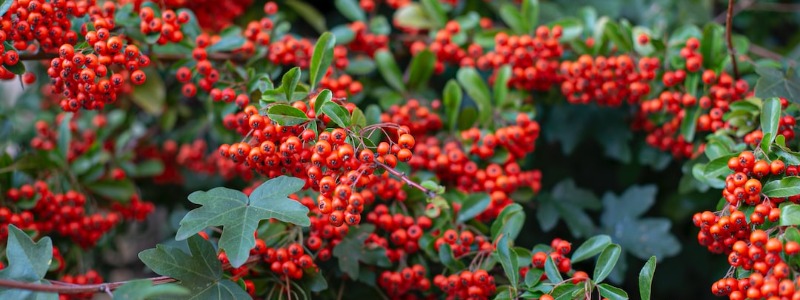
The Yaupon Holly is a versatile shrub that will add dimension and form to any landscape! This plant flowers in the spring and produces red, orange, or yellow fruits throughout the fall and winter. The several clones produce a wide range of sizes ranging from 4′ – 30′ high and 2′ – 15′ wide. Because of its excellent heat tolerance, the Yaupon Holly is a reliable alternative for Central Texas landscapes.
Mexican plum
this is a small deciduous tree that produces lovely white flowers every spring. Each year garden experts get calls wanting to know what this beautiful tree is. It is a great addition to your landscape.
Oaks
Oaks are well-loved trees, but there can be some serious maintenance and other problems with them. Planting them in the right space, and choosing a good variety for our area is essential. Do not put a huge oak so close to your house that it becomes a big maintenance problem, constantly having to be trimmed away from the roof. The varieties that we recommend are Bur oak (Earth-Kind), Shumard oak, Live oak, and Lacey Oak (Earth-Kind and Texas Superstar and pictured at left). Avoid pruning oaks from February to June to prevent the spread of the disease Oak Wilt, which is a devastating, deadly disease that is hard to cure.
Live Oaks are a great suggestion in Central Texas because of their great heat tolerance and ability to thrive in a variety of Texas conditions. This tree grows to a height of 40′ to 60′ and has a canopy of branches that spans 50′ to 70′, giving great shade for your front yard! Live Oaks also produce oblong acorns and blossom in the spring.
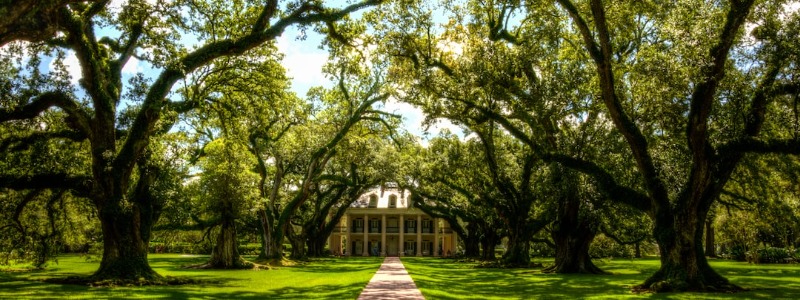
Chinkapin Oaks are big trees that can reach 70 feet in height and provide plenty of shade. This tree generates an abundance of acorns. Chinkapin Oak trees have a strong heat tolerance, making them ideal for our Central Texas region.
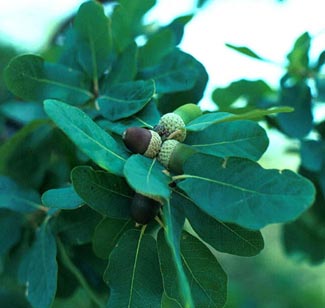
White Oaks are another large, heat-tolerant species that will provide plenty of shade, standing 50′ to 70′ tall and 60′ to 80′ wide. White oaks have slender trunks and spreading branches, making them a classic and charming addition to your landscape. This tree also produces acorns and flowers in the spring.
Pistache, Chinese
The Chinese Pistache is a visually appealing ornamental tree. This is a medium-sized deciduous tree that grows to around 40 feet tall. It has brilliant red fall color. It can grow in heavy clay soils. It is a Texas Superstar®. The Chinese Pistache has a great heat tolerance, making it ideal for our Central Texas climate!
Pomegranate
These come and are small tree to shrub size. Both kinds have lovely orange flowers and maroon-colored fruit. Easy to grow in full sun; they do not need much water.
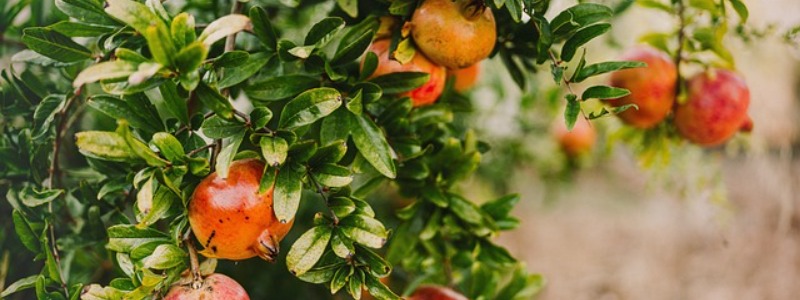
Snowball viburnum
if you want a small tree that reaches 12 feet tall with gigantic white clusters of blooms this is the plant for you. It blooms mid-spring. For the largest cluster of blooms pick the variety Viburnum macrocephalum, as smaller blooming viburnums also exist.
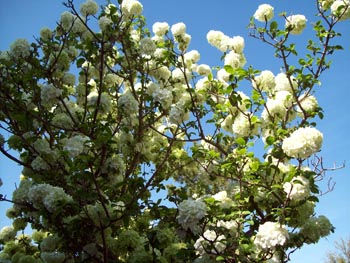
Spirea
The best spirea for our area is the bridal wreath spirea. It is one of the earliest blooming shrubs here. This six-foot-tall shrub is covered with beautiful white blossoms. It is easy to care for and drought tolerant.
Texas Mountain Laurel
Texas Mountain Laurel is a bush that can become a tree if you trim it up. It has fragrant purple flowers in the spring that look like wisteria blooms. It can take part shade as well as full sun. If we have an unusually cold winter this plant can die, but it is well worth it to have it in the meantime.
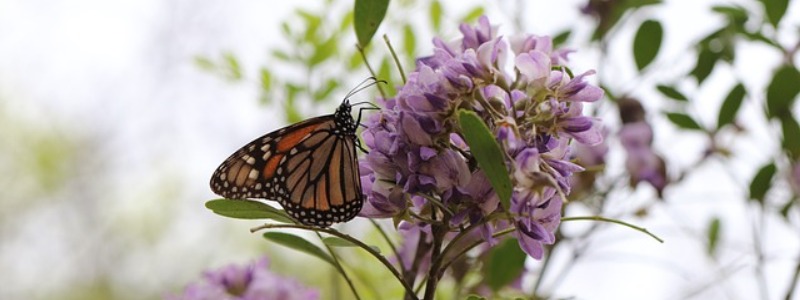
How to plant a Tree
Dig a hole where you want the tree, making sure that you have met the light requirements of your particular tree. Try to keep in mind that the little twig you are planting will get really big, so allow plenty of room for it as it grows. Don’t plant a tree where it will shade your vegetable garden or fall over and crush your roof during a storm. Keep your neighbors in mind when you plant near their property borders.
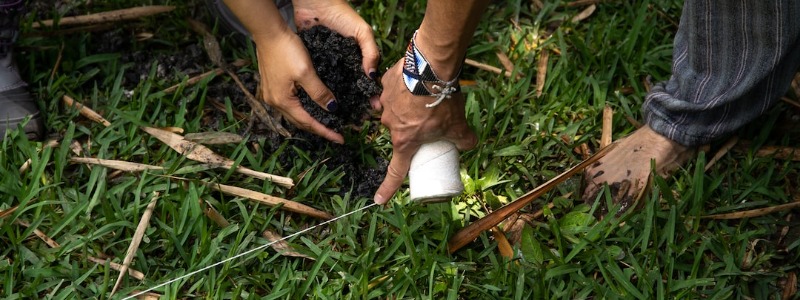
Now, back to that hole you dug. Fill the hole with a bucket of water and go away. Come back in an hour and see if the water is gone, or almost gone. If it is gone you may proceed. If not, come back in two hours and see if it has drained away. If it has not, you may have to plant your tree in another location or in a raised bed. Trees need adequate drainage. Consult a Master Gardener or tree expert about other, more complicated ways to provide drainage, if you must have it in that location.
Once you are ready to plant, make sure that the edges of the hole are not slick. Break them up with your shovel. You don’t want to form a pot made from your hole that will fill with water and drown your plant. Once you are ready to plant, take the tree out of its nursery pot or unwrap it and set the roots in a big bucket of water. Leave the tree there until it is saturated.
Remove the tree from the water bucket and examine the root ball. The top of the tree roots where they just begin to flare out from the trunk, should not be covered with soil. If they are, carefully remove soil from around this area. You can use a water hose to do this. Notice if the tree has roots that encircle the trunk. This is very bad! Remove any such roots with a knife or clippers, or gently unwind from around the trunk. If you don’t do this, your tree may die eventually.
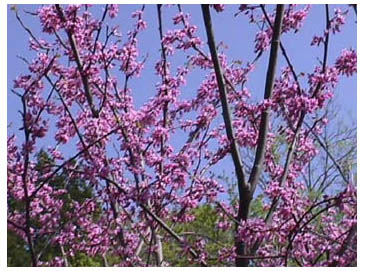
Now set your tree in the hole and add a little native soil if needed to bring it to a level so that the root flair is sitting just above the surface of the soil. Do not use amended soil! Fill the hole only with the soil you dug out of the hole. This will prevent the hole from becoming a water pot when it rains. If you are planting something like Azaleas, and we hope you aren’t, then you must dig up a big bed that is many feet wider than your trees or shrubs and then plant in that bed. Then it is all right to amend the soil.
After you have filled the soil in, water the tree. This will settle the soil and you may find that you will need to add a little more soil on top. Whatever you do, don’t step on the soil with your foot to tamp it down!!!! You will probably not need to brace the tree with stakes and wires, this weakens trees and creates problems later on. Never wrap the trunk with paper; that is just sheer ignorance. Don’t paint the tree after trimming; it doesn’t help.
For serious problems on big trees like oaks, you will need to consult an arborist; these are complicated and require the advice of an expert trained in this field–not someone passing by your house who trims trees on the side. Big trees can be very dangerous for yourself and your property if trimming is handled by a novice.
We do not like to plant very big trees close to houses; there are just too many problems with the destructive roots and heavy branches. If you have the choice, don’t plant large trees that will grow huge trunks next to your house. Remember that the tree you plant 10 feet from your house will easily extend right over your roof in time. Big trees need big property to grow on.

